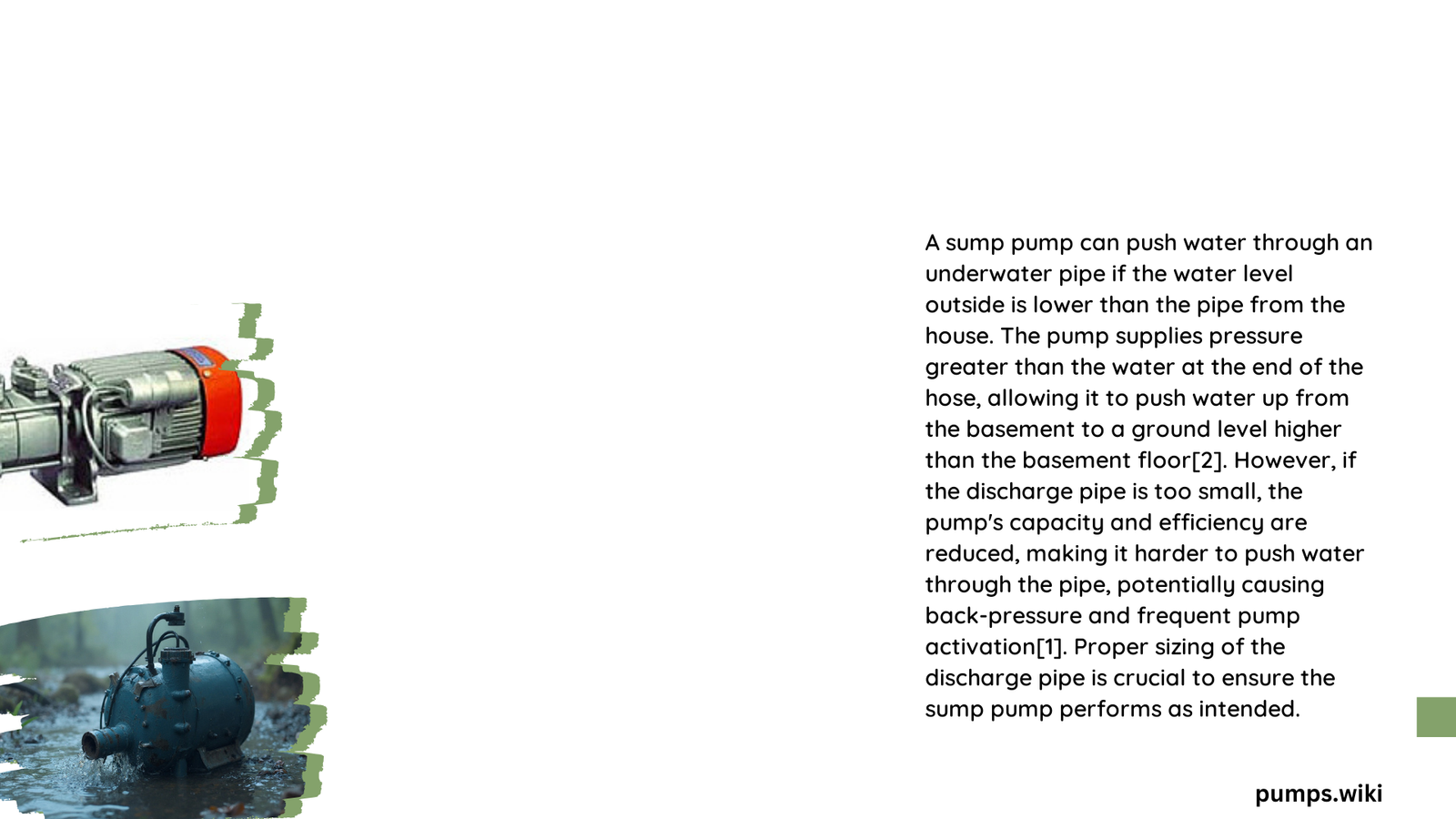Sump pumps are critical drainage systems designed to remove excess water from basements and crawl spaces. Understanding their capacity to push water through underwater pipes involves analyzing multiple technical factors like pump horsepower, pipe diameter, vertical lift, and friction losses. Homeowners and professionals need comprehensive insights into how these systems effectively transport water from submerged environments to exterior drainage points.
What Determines a Sump Pump’s Water Pushing Capacity?
Sump pump water pushing capabilities depend on several critical technical parameters:
How Much Pressure Can a Typical Sump Pump Generate?
A sump pump’s pressure generation is directly related to its horsepower and total dynamic head. Here’s a detailed breakdown:
| Pump Horsepower | Vertical Lift | Horizontal Run | Approximate Pressure (PSI) |
|---|---|---|---|
| 1/3 HP | 7-10 feet | 3-25 feet | 3-4 PSI |
| 1/2 HP | 10-15 feet | 25-50 feet | 4-6 PSI |
| 1 HP | 15-20 feet | 50-250 feet | 6-8 PSI |
What Pipe Characteristics Impact Water Transportation?
Several pipe-related factors influence water pushing capabilities:
- Pipe Diameter
- Standard sizes: 1.25″ to 1.5″ inside diameter
- Larger diameters reduce friction losses
-
PVC is the most common material
-
Pipe Material
- PVC recommended for durability
- Smooth interior reduces friction
- Resistant to corrosion and chemical degradation
What Challenges Limit Underwater Pipe Water Transportation?
Limitations in sump pump water pushing include:
- Friction Losses: Longer pipe runs increase resistance
- Vertical Lift: Higher elevations reduce pumping efficiency
- Pipe Diameter: Smaller pipes create significant back pressure
- Pump Horsepower: Lower HP pumps struggle with complex pipe routes
How Do Professionals Calculate Water Pushing Potential?
Professionals use total dynamic head calculations:
- Static Head: Vertical distance water must be lifted
- Friction Head: Resistance created by pipe length and diameter
- Calculation Formula: Total Dynamic Head = Static Head + Friction Head
What Are Best Practices for Maximizing Water Transportation?
Recommended strategies include:
- Select pump with appropriate horsepower
- Use larger diameter pipes for extended runs
- Minimize unnecessary bends in pipe routing
- Regular maintenance to prevent efficiency reduction
- Consider professional assessment for complex drainage scenarios
Technical Recommendations for Optimal Performance
- Maintain pipe slope for gravity-assisted drainage
- Use check valves to prevent backflow
- Insulate pipes in cold environments
- Regularly inspect for potential blockages
Conclusion

Sump pumps can effectively push water through underwater pipes when properly configured, with performance dependent on multiple interconnected technical factors. Understanding these parameters ensures reliable water management in residential and commercial settings.
Pro Tip: Always consult a professional for complex drainage system designs to ensure maximum efficiency and longevity.
